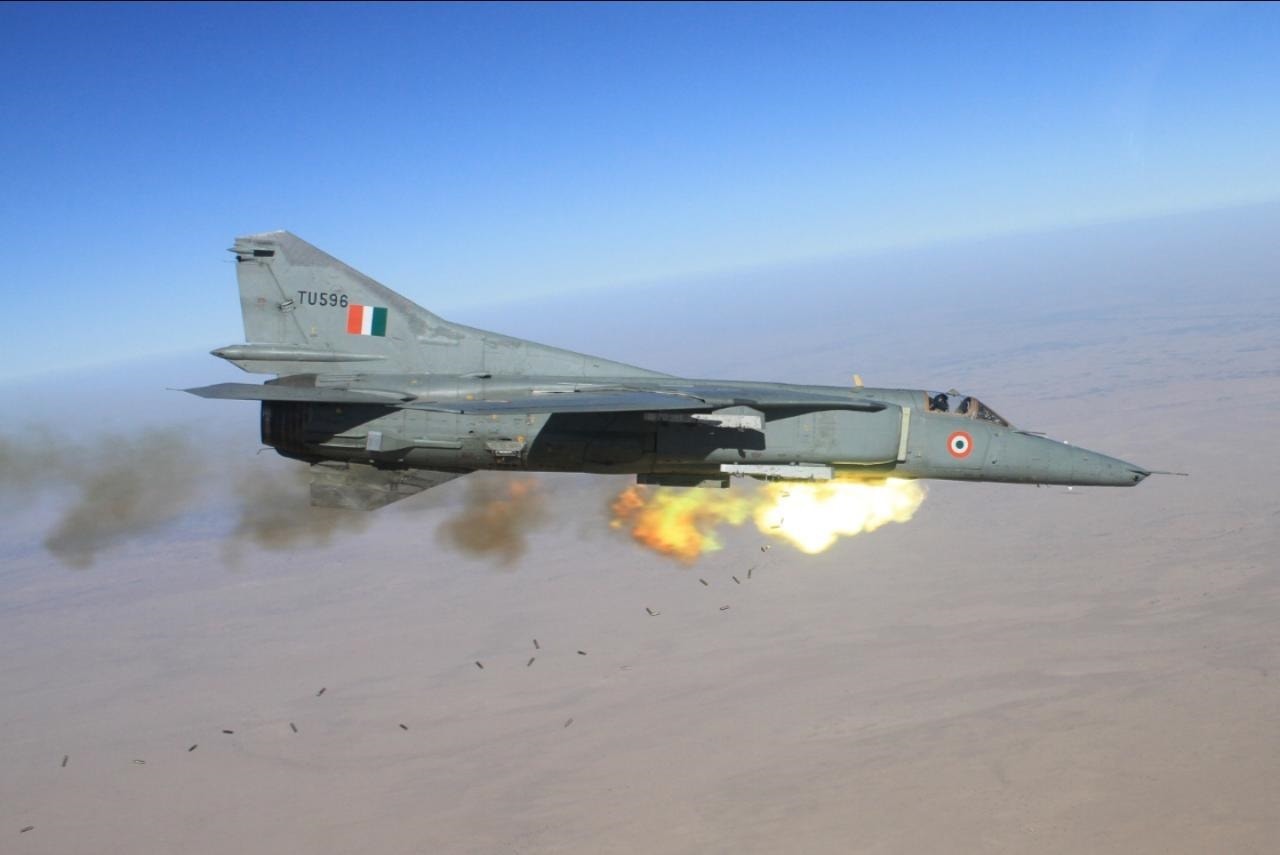MiG-27: the MiG-23’s Lesser-Known Descendent
Formerly a significant workhorse of the late-Cold War air force of the Soviet Union, the MiG-27 has faded into relative obscurity compared to many similar Russian aircraft produced by Mikoyan-Gurevich and the rest of the Soviet Union and Russia’s defense aerospace sector. While it was one of the last attack aircraft developed to serve the Soviet Union and other friendly states of Moscow, it ultimately has been phased out of service ahead of similar models by almost every state that has operated it.
The MiG-27: an Upgrade of the MiG-23
Dubbed the “Flogger” under its NATO designation, the MiG-27 was designed as an upgrade of the earlier MiG-23, which was a fighter rather than a ground attack aircraft, the intended role of the MiG-27.
The principal upgrades to the Flogger (a name which the MiG-27 shares with the MiG-23, although a D or J label is added to MiG-27’s Flogger designation) that made it into the MiG-27 were an updated, sloped-down nose for better attack visibility, increased armor plating around critical sections of the aircraft, and improved avionics systems related to jamming and radio navigations.
In keeping with its altered role, its original radar system was replaced with a laser rangefinder. Guided by a single pilot, the MiG-27 was propelled by a single Khatchaturov R-29B-300 engine, which gave the aircraft an operational range at altitude of 1,304 miles and a max speed of 1,120 miles per hour at altitude.
The MiG-27 also made use of a variable swept-wing system, which allowed the aircraft to tailor its lift, speed, and handling characteristics on the fly to suit whatever combat situation it found itself in.
The MiG-27’s Powerful but Dangerous Cannon
One of the most famous elements of the MiG-27 was its massive cannon armament which practically shook the aircraft to its core when fired. The MiG-27 featured a six-barrel 30-millimeter GSh-6-30 cannon which is positioned in a gondola underneath the aircraft’s fuselage. When fired, the cannon produced roughly 6 tons of recoil, which had the ability to sometimes damage the structure of the aircraft and its avionics.
In addition to this heavy gun, the MiG-27 could carry a variety of types of air-to-surface missiles and laser- or television-guided bombs.
Both the MiG-27 and its MiG-23 progenitor suffered from a variety of inbuilt technical issues which hampered the effectiveness of the aircraft and presented challenges for the pilot. Its engines reportedly suffered from frequent accidental explosions, and its air-conditioning system functioned minimally at lower altitudes, which presented a significant challenge to the many Indian pilots who flew the Flogger.
MiG-27s Go Global
In 2019, India retired its last MiG-27s, leaving Kazakhstan as the final state still operating the aircraft. India had previously operated a total of 165 domestically produced MiG-27s, of which an estimated 10% were lost to crashes. Sri Lanka acquired several MiG-27 aircraft from Soviet successor states in the 1990s to fight Tamil Tiger insurgents. These aircraft were piloted by Ukrainian mercenaries, and also proved to be exceedingly prone to crashes, as the Sri Lankan Air Force had a poor record of maintaining what was already an unreliable aircraft.
The Flogger also saw service in the 1999 Kargil War between India and Pakistan. In addition to its service in India and Sri Lanka, the MiG-27 served in the air forces of Russia, Belarus, and Ukraine, but was phased out of service in each in the years following the collapse of the Soviet Union.
While the MiG-27 possessed a powerful cannon and a variable swept-wing configuration which gave it some notable flexibility in combat situations, the Flogger was ultimately doomed by its dangerous unreliability relative to other ground aircraft developed in the late Soviet Union.
Wesley Culp is a Research Fellow at the Center for the Study of the Presidency and Congress. He regularly writes on Russian and Eurasian leadership and national security topics and has been published in The Hill as well as in the Diplomatic Courier. He can be found on Twitter @WesleyJCulp.

